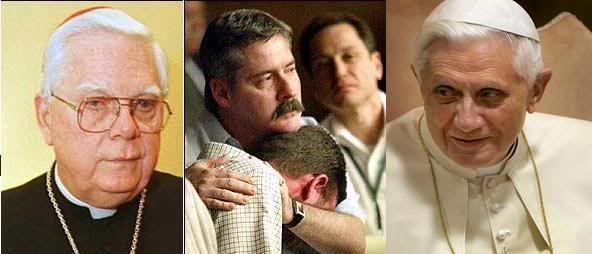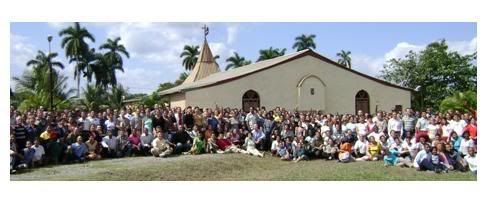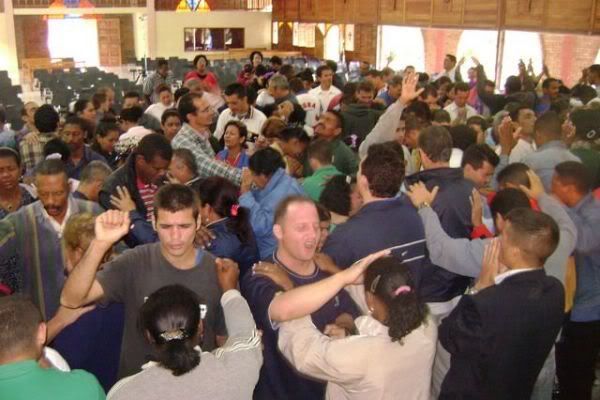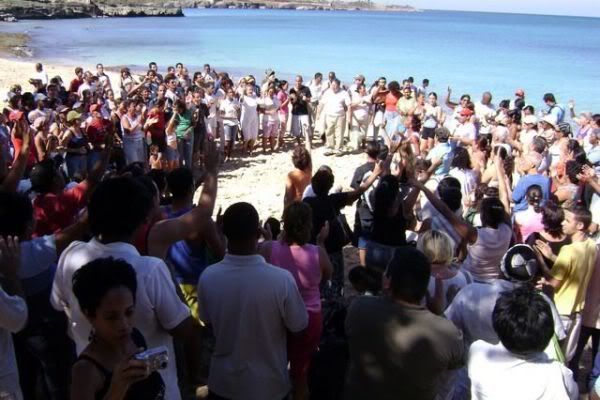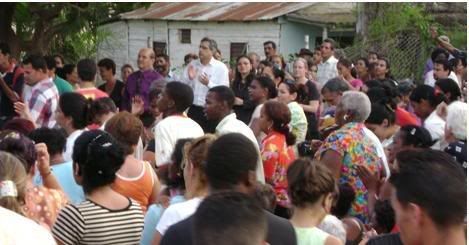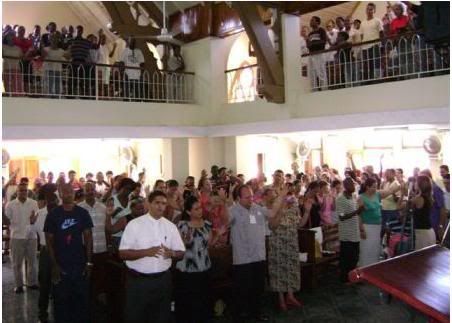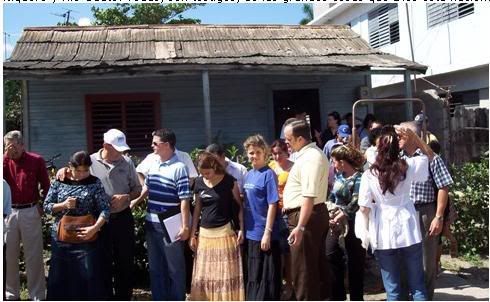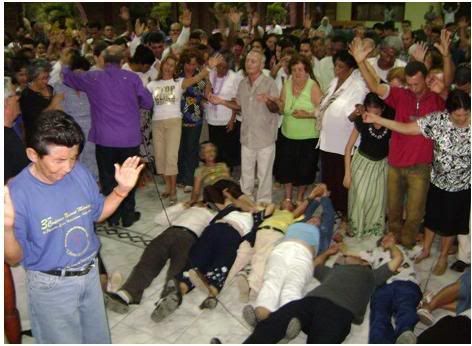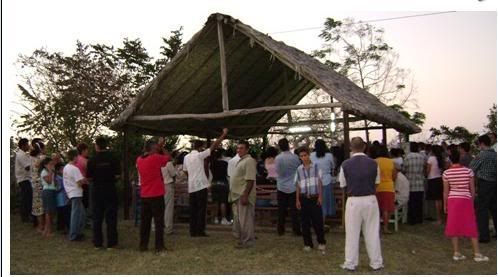By Andrea Thompson, Daily Mail
"Clutching her Hermes holiday bag under her arm, Susan Barrington, a 52-year-old housewife from Buckinghamshire, can't help smiling as she leaves the exclusive clinic in London's Wimpole Street.She has been given the final go-ahead to travel abroad for a cutting edge nonsurgical treatment that promises to make her look ten years younger.She doesn't care if the treatment is expensive, involves babies and is so controversial that it is not allowed to be performed in this country - among her well-heeled friends, this is the ultimate new elixir of youth.
 The attractive brunette has opted for a controversial stem- cell therapy where umbilical cord tissue from new-born babies will be injected into her body.It may seem distasteful, but thousands of women have already done it and it is organised by a seemingly respectable British clinic then carried out in Rotterdam, Holland, where rules regarding stemcell therapies are not so strict.Stem-cell therapy has been big business for beauty doctors since medics discovered the strong healing and rejuvenating potential of stem cells for medical conditions such as Alzheimer's and Parkinson's. But there has also been a furious ethical debate.In America, President Bush has denounced stem- cell therapy even for medical purposes as 'godless', vetoing any public funding, though controversially Arnold Schwarzenegger, governor of California, one of the few U.S. states to allow stem-cell research, has allocated 80 million dollars to it. Tony Blair met him only last week to support the move.So what is it about stem cells that has set tongues wagging in the beauty world? They are the building blocks of every human body but are far more plentiful in embryos, which are still growing, human foetuses, or newborn babies, than in adults.They are immature but powerful cells that, once extracted, can be stimulated in a laboratory to develop into any type of body cell or organ, including bone, muscle and body tissue.When injected, these powerful cells target the organs that are not functioning at their optimum and encourage them to produce new tissue.But scientists agree that further research is required to substantiate the claim that injecting stem cells can diminish wrinkles or reverse the signs of ageing.In Britain, stem-cell research is governed by strict ethical considerations - it is limited to registered institutions using cells from embryos up to 14 days old or aborted foetuses donated to science.But it has proved difficult to police clinics abroad and it is here that many people go for a range of stem-cell treatments, with a whole industry happy to cater for their needs.Such unregulated companies have mushroomed across the globe offering 'aesthetic stem-cell therapies' at exorbitant prices to anyone willing to pay. They claim that stem cells have the ability to rejuvenate the body and renew the cells, not just to produce younger, smoother skin, but increased sex drive and energy.'By definition, what such clinics are doing is highly experimental and risks damaging the reputation of legitimate stem-cell research we are doing to help cure illnesses,' says leading UK stem-cell researcher Colin Blakemore.'Because so many clinics are based in tourist spots and refuse to be members of the only recognised board to regulate ethical stem-cell research - The International Stem Cell Forum - there is much room for unethical and morally dubious treatment by unqualified doctors. And if anything goes wrong afterwards, it is hushed up to prevent damage to the business.This week, posing as a 50-year-old, I went in search of the latest anti-ageing remedies that the world's top clinics have to offer.My investigation threw up a worrying new trade across the globe in unregulated stemcell treatments costing anywhere between £150 and £20,000. Yet hundreds of British women are visiting such clinics desperate for the new elixirs of youth.Here, The Mail names clinics at the forefront of this disturbing new beauty craze and reveals what really goes on."
The attractive brunette has opted for a controversial stem- cell therapy where umbilical cord tissue from new-born babies will be injected into her body.It may seem distasteful, but thousands of women have already done it and it is organised by a seemingly respectable British clinic then carried out in Rotterdam, Holland, where rules regarding stemcell therapies are not so strict.Stem-cell therapy has been big business for beauty doctors since medics discovered the strong healing and rejuvenating potential of stem cells for medical conditions such as Alzheimer's and Parkinson's. But there has also been a furious ethical debate.In America, President Bush has denounced stem- cell therapy even for medical purposes as 'godless', vetoing any public funding, though controversially Arnold Schwarzenegger, governor of California, one of the few U.S. states to allow stem-cell research, has allocated 80 million dollars to it. Tony Blair met him only last week to support the move.So what is it about stem cells that has set tongues wagging in the beauty world? They are the building blocks of every human body but are far more plentiful in embryos, which are still growing, human foetuses, or newborn babies, than in adults.They are immature but powerful cells that, once extracted, can be stimulated in a laboratory to develop into any type of body cell or organ, including bone, muscle and body tissue.When injected, these powerful cells target the organs that are not functioning at their optimum and encourage them to produce new tissue.But scientists agree that further research is required to substantiate the claim that injecting stem cells can diminish wrinkles or reverse the signs of ageing.In Britain, stem-cell research is governed by strict ethical considerations - it is limited to registered institutions using cells from embryos up to 14 days old or aborted foetuses donated to science.But it has proved difficult to police clinics abroad and it is here that many people go for a range of stem-cell treatments, with a whole industry happy to cater for their needs.Such unregulated companies have mushroomed across the globe offering 'aesthetic stem-cell therapies' at exorbitant prices to anyone willing to pay. They claim that stem cells have the ability to rejuvenate the body and renew the cells, not just to produce younger, smoother skin, but increased sex drive and energy.'By definition, what such clinics are doing is highly experimental and risks damaging the reputation of legitimate stem-cell research we are doing to help cure illnesses,' says leading UK stem-cell researcher Colin Blakemore.'Because so many clinics are based in tourist spots and refuse to be members of the only recognised board to regulate ethical stem-cell research - The International Stem Cell Forum - there is much room for unethical and morally dubious treatment by unqualified doctors. And if anything goes wrong afterwards, it is hushed up to prevent damage to the business.This week, posing as a 50-year-old, I went in search of the latest anti-ageing remedies that the world's top clinics have to offer.My investigation threw up a worrying new trade across the globe in unregulated stemcell treatments costing anywhere between £150 and £20,000. Yet hundreds of British women are visiting such clinics desperate for the new elixirs of youth.Here, The Mail names clinics at the forefront of this disturbing new beauty craze and reveals what really goes on." Destination: Barbados:
The Institute for Regenerative Medicine
The Treatment: Anti-ageing stem-cell injections made from aborted foetal tissue, £15,000 The past 12 months have seen this popular holiday resort become the stem-cell capital of the developed world, treating hundreds of patients in a year.
The upmarket clinic opened last year in one of the island's most luxurious hotels - Villa Nova - after Ukrainian stem-cell researchers, who have been secretly pioneering stem-cell studies with aborted human foetuses for 20 years, teamed up with U.S. investors backed by the Caribbean tourist industry.
The aim was to attract wealthy British and American stem-cell tourists for treatment, avoiding the strict ethical barriers to such treatment enforced in Europe and America. The clinic is so busy it has a waiting list of more than 1,000 patients for cosmetic treatments and has treated dozens of British women. The promise: The clinic claims that the foetal tissue derived from elective abortions at six to 12 weeks is rich in regenerative stem cells. 'We inject the cells taken from the liver tissue of human foetuses directly into the vein in the back of your hand,' explains the well-spoken English consultant Jenny, who gives telephone consultations to potential patients.
'The results are incredible. You'll feel and look different after a month because these cells help the body to regenerate itself. The effects last for approximately a year before it needs to be "topped up'' '.
Despite criticism from Church leaders and religious groups on the Island, Barnett Suskind, chief executive of IRM, is unapologetic about the treatment he carries out. 'It is the most natural form of healing there is - in ten years, everyone will be doing this,' he says. 'You think better, sleep better, and look better. Your quality of life improves and your libido certainly improves.' The reality: 'The science behind the treatments on offer at IRM is based on the theory that stem cells from aborted foetuses may search out damaged and dead cells in the body and work to repair and replace them,' says Dr Stephen Minger, director of stem cell biology at King's College, London.
'But what this clinic is doing raises serious issues. For a start, it is not regulated by any medical board and there is no documented evidence or controlled clinical trials to back up their claims. More worryingly, there is no proof that the tissue is obtained from truly elective abortions rather than financially induced ones.
'Research shows that they openly import foetuses from poverty-stricken provinces in Ukraine and Russia, preying on the financially desperate to treat vain Western women.'
Destination: Moscow:
The Cellulite Clinic.
The treatment: Anti-ageing injections of stem cells from aborted foetuses into thighs, buttocks and stomach -
£10,000 to £15,000 for a course of six.
More than 50 clinics, including this one, have sprung up in Russia's capital over the past three years to meet the demand from wealthy Russians and Westerners alike who flock to the global capital of cosmetic stem-cell therapy, where clinics use loopholes in the law to administer injections.
Nearby Ukraine is home to Emcell, the world's largest clinic that has openly experimented in stem-cell therapy for the past 15 years and administers hundreds of anti-ageing therapies a year.
The promise: Treatments range from the injection of stem cells from animals such as cows and pigs to injecting cells taken from the umbilical cords or livers of aborted human foetuses. 'Foetal tissue has been shown to be highly rich in regenerative stem cells which, when injected into adults, helps the body fight the ageing process,' says Dr Elena Bochkaryova.
'I have had patients who leave my clinic after a course of injections looking and feeling ten years younger than when they came in.' The reality: RUSSIA and the Ukraine currently top the world abortion league, with more of the operations carried out here than anywhere else on earth. Evidence gathered by the Moscow police department has shown a growing black market in aborted foetuses, which are smuggled into Russia from the Ukraine and Georgia.
Here, poverty-stricken young women are paid 200 U.S. dollars to carry babies up to the optimum eight to 12-week period - thought to be best for harvesting stem cells. They are then sold on to cosmetic clinics.
'The cavalier attitude of Russian cosmetic surgeons is grotesque,' says Dr Minger. 'The origin of the cells is ethically immoral. Furthermore, they don't bother to test for compatibility between the cells injected and the patient who receives them. Medical risks from complications can include infection, tumours and rejection of foreign tissue.'
Destination: Dominican Republic
Medra Clinic
The treatment: Foetal stem-cell injections from £15,000. Malibu psychiatrist William Rader, 67, previously owned a string of private clinics in LA dedicated to treating eating disorders. He recently founded Medra to offer stem-cell treatments to wealthy clients who wanted to combine a holiday on the exotic La Romana beach resort in the Dominican Republic with their stem-cell therapy.
He has arranged for hundreds of patients to be injected with cells taken from six to 12-week-old aborted foetuses since the clinic opened its doors. Initial consultations are done at Rader's LA surgery at Malibu beach. Arrangements are then made for patients to fly out to the luxury resort in the Dominican Republic to have the treatment administered. The promise: According to Medra's website, the foetal stem cell 'detects and then attempts to repair any damage or deficit discovered in the body, as well as releasing growth factors, which stimulate the body's own repair mechanisms.
'Stem-cell therapy is the future. It's just unfortunate that there is so much opposition to it in the West,' Rader says.
The reality: Debra Huff-Rader, director of physician and patient relations, is deliberately vague when I ask where the foetuses are sourced, saying only that they are from the former Soviet republic of Georgia. But she invites me to speak with Rader himself.
'Because Rader is acting outside America, his work falls outside U.S. regulations on stem-cell therapy,' says Dr Minger. 'Patients risk at best wasting a lot of money on a treatment that is not proven in clinical trials and at worst one that is putting their health at serious risk.'
Destination: Rotterdam
The PMC clinic
The treatment: Anti-ageing stem-cell injections composed of umbilical cord blood - £8,500. Consultations cost £150 per hour and take place in London's Wimpole Street with Dr Robert Trossell. His patients fly out to Holland, where treatment is carried out. Antiageing treatments involve being injected with stem cells extracted from the umbilical cords of babies who have had a natural birth to full term.
The promise: 'Umbilical cord stem cells are the youngest, safely available stem cells,' claims the website. 'We have never had any negative side-effects. Because of the purity of the stem cells, the body will not recognise them as invaders.'
I am reassured by Dr Trossell's Londonbased assistant that it is perfectly safe and easy to arrange, although they are so busy that I must wait over a month for my initial appointment and then a further three months before treatment.
The reality: 'There is no convincing evidence that what the PMC clinic is doing actually works or is safe,' says Dr Minger. 'To state that these cells cannot be rejected is false. This treatment runs the risk of serious infection, tumours and cancer.
'To inject cells from one human being into another, a range of checks must be made to make sure they genetically match each other. Without being properly regulated, you cannot trust that the clinic will do this. At the least you risk being ripped off, at most developing a serious illness.'
Destination: New York
The Nabi Medspa
The treatment: The Frozen in Time Stem-Cell Facial - £150. The latest beauty treatment to hit Manhattan's spa scene has, according to the owner, already drawn a host of customers from the UK and Europe as well as wealthy New Yorkers. The facial involves an exfoliation and steam. The face is then covered in a moisturiser composed of cells harvested from the embryonic fluid of pregnant cows. The result according to Nabi's owner Ivy Cho is ' biological supremacy over ageing skin'.
The promise: The spa claims that introducing live stem cells from cows helps your skin cells - which may be damaged by ' environmental factors' - restore and replicate themselves, creating healthier, stronger, more youthful-looking skin.
'The treatment is originally from France and has become popular with premium customers,' says a consultant at the spa who claims the cows are not hurt in any way during the process.
'We pat the liquid onto the face rather than rubbing it in, which breaks up the cells. It takes just an hour, but immediately afterwards your skin will feel hydrated, firmer and tighter, with a flawless glow. After six days your skin becomes radiant.' The reality: Scedptics argue that the treatment is useless. 'Rubbing on cow cells which have been previously frozen and are consequently dead is of no use at all. In any case, simply putting them onto the surface of the skin means they could never actually seep in to the body,'says Dr Minger.
'This treatment is farcical. Why would putting the cells of cows on to a human being's skin rejuvenate it? It's just not possible. Any woman who wants to rejuvenate her skin should simply eat healthily and invest in a good facial moisturiser.'
Destination: Barbados:The Institute for Regenerative MedicineThe Treatment: Anti-ageing stem-cell injections made from aborted foetal tissue, £15,000 The past 12 months have seen this popular holiday resort become the stem-cell capital of the developed world, treating hundreds of patients in a year.
The upmarket clinic opened last year in one of the island's most luxurious hotels - Villa Nova - after Ukrainian stem-cell researchers, who have been secretly pioneering stem-cell studies with aborted human foetuses for 20 years, teamed up with U.S. investors backed by the Caribbean tourist industry.
The aim was to attract wealthy British and American stem-cell tourists for treatment, avoiding the strict ethical barriers to such treatment enforced in Europe and America. The clinic is so busy it has a waiting list of more than 1,000 patients for cosmetic treatments and has treated dozens of British women. The promise: The clinic claims that the foetal tissue derived from elective abortions at six to 12 weeks is rich in regenerative stem cells. 'We inject the cells taken from the liver tissue of human foetuses directly into the vein in the back of your hand,' explains the well-spoken English consultant Jenny, who gives telephone consultations to potential patients.
'The results are incredible. You'll feel and look different after a month because these cells help the body to regenerate itself. The effects last for approximately a year before it needs to be "topped up'' '.
Despite criticism from Church leaders and religious groups on the Island, Barnett Suskind, chief executive of IRM, is unapologetic about the treatment he carries out. 'It is the most natural form of healing there is - in ten years, everyone will be doing this,' he says. 'You think better, sleep better, and look better. Your quality of life improves and your libido certainly improves.' The reality: 'The science behind the treatments on offer at IRM is based on the theory that stem cells from aborted foetuses may search out damaged and dead cells in the body and work to repair and replace them,' says Dr Stephen Minger, director of stem cell biology at King's College, London.
'But what this clinic is doing raises serious issues. For a start, it is not regulated by any medical board and there is no documented evidence or controlled clinical trials to back up their claims. More worryingly, there is no proof that the tissue is obtained from truly elective abortions rather than financially induced ones.
'Research shows that they openly import foetuses from poverty-stricken provinces in Ukraine and Russia, preying on the financially desperate to treat vain Western women.'
Destination: Moscow: The Cellulite Clinic.The treatment: Anti-ageing injections of stem cells from aborted foetuses into thighs, buttocks and stomach -
£10,000 to £15,000 for a course of six.
More than 50 clinics, including this one, have sprung up in Russia's capital over the past three years to meet the demand from wealthy Russians and Westerners alike who flock to the global capital of cosmetic stem-cell therapy, where clinics use loopholes in the law to administer injections.
Nearby Ukraine is home to Emcell, the world's largest clinic that has openly experimented in stem-cell therapy for the past 15 years and administers hundreds of anti-ageing therapies a year.
The promise: Treatments range from the injection of stem cells from animals such as cows and pigs to injecting cells taken from the umbilical cords or livers of aborted human foetuses. 'Foetal tissue has been shown to be highly rich in regenerative stem cells which, when injected into adults, helps the body fight the ageing process,' says Dr Elena Bochkaryova.
'I have had patients who leave my clinic after a course of injections looking and feeling ten years younger than when they came in.' The reality: RUSSIA and the Ukraine currently top the world abortion league, with more of the operations carried out here than anywhere else on earth. Evidence gathered by the Moscow police department has shown a growing black market in aborted foetuses, which are smuggled into Russia from the Ukraine and Georgia.
Here, poverty-stricken young women are paid 200 U.S. dollars to carry babies up to the optimum eight to 12-week period - thought to be best for harvesting stem cells. They are then sold on to cosmetic clinics.
'The cavalier attitude of Russian cosmetic surgeons is grotesque,' says Dr Minger. 'The origin of the cells is ethically immoral. Furthermore, they don't bother to test for compatibility between the cells injected and the patient who receives them. Medical risks from complications can include infection, tumours and rejection of foreign tissue.'
Destination: Dominican RepublicMedra ClinicThe treatment: Foetal stem-cell injections from £15,000. Malibu psychiatrist William Rader, 67, previously owned a string of private clinics in LA dedicated to treating eating disorders. He recently founded Medra to offer stem-cell treatments to wealthy clients who wanted to combine a holiday on the exotic La Romana beach resort in the Dominican Republic with their stem-cell therapy.
He has arranged for hundreds of patients to be injected with cells taken from six to 12-week-old aborted foetuses since the clinic opened its doors. Initial consultations are done at Rader's LA surgery at Malibu beach. Arrangements are then made for patients to fly out to the luxury resort in the Dominican Republic to have the treatment administered. The promise: According to Medra's website, the foetal stem cell 'detects and then attempts to repair any damage or deficit discovered in the body, as well as releasing growth factors, which stimulate the body's own repair mechanisms.
'Stem-cell therapy is the future. It's just unfortunate that there is so much opposition to it in the West,' Rader says.
The reality: Debra Huff-Rader, director of physician and patient relations, is deliberately vague when I ask where the foetuses are sourced, saying only that they are from the former Soviet republic of Georgia. But she invites me to speak with Rader himself.
'Because Rader is acting outside America, his work falls outside U.S. regulations on stem-cell therapy,' says Dr Minger. 'Patients risk at best wasting a lot of money on a treatment that is not proven in clinical trials and at worst one that is putting their health at serious risk.'
Destination: RotterdamThe PMC clinicThe treatment: Anti-ageing stem-cell injections composed of umbilical cord blood - £8,500. Consultations cost £150 per hour and take place in London's Wimpole Street with Dr Robert Trossell. His patients fly out to Holland, where treatment is carried out. Antiageing treatments involve being injected with stem cells extracted from the umbilical cords of babies who have had a natural birth to full term.
The promise: 'Umbilical cord stem cells are the youngest, safely available stem cells,' claims the website. 'We have never had any negative side-effects. Because of the purity of the stem cells, the body will not recognise them as invaders.'
I am reassured by Dr Trossell's Londonbased assistant that it is perfectly safe and easy to arrange, although they are so busy that I must wait over a month for my initial appointment and then a further three months before treatment.
The reality: 'There is no convincing evidence that what the PMC clinic is doing actually works or is safe,' says Dr Minger. 'To state that these cells cannot be rejected is false. This treatment runs the risk of serious infection, tumours and cancer.
'To inject cells from one human being into another, a range of checks must be made to make sure they genetically match each other. Without being properly regulated, you cannot trust that the clinic will do this. At the least you risk being ripped off, at most developing a serious illness.'
Destination: New YorkThe Nabi MedspaThe treatment: The Frozen in Time Stem-Cell Facial - £150. The latest beauty treatment to hit Manhattan's spa scene has, according to the owner, already drawn a host of customers from the UK and Europe as well as wealthy New Yorkers. The facial involves an exfoliation and steam. The face is then covered in a moisturiser composed of cells harvested from the embryonic fluid of pregnant cows. The result according to Nabi's owner Ivy Cho is ' biological supremacy over ageing skin'.
The promise: The spa claims that introducing live stem cells from cows helps your skin cells - which may be damaged by ' environmental factors' - restore and replicate themselves, creating healthier, stronger, more youthful-looking skin.
'The treatment is originally from France and has become popular with premium customers,' says a consultant at the spa who claims the cows are not hurt in any way during the process.
'We pat the liquid onto the face rather than rubbing it in, which breaks up the cells. It takes just an hour, but immediately afterwards your skin will feel hydrated, firmer and tighter, with a flawless glow. After six days your skin becomes radiant.' The reality: Scedptics argue that the treatment is useless. 'Rubbing on cow cells which have been previously frozen and are consequently dead is of no use at all. In any case, simply putting them onto the surface of the skin means they could never actually seep in to the body,'says Dr Minger.
'This treatment is farcical. Why would putting the cells of cows on to a human being's skin rejuvenate it? It's just not possible. Any woman who wants to rejuvenate her skin should simply eat healthily and invest in a good facial moisturiser.'
Link: Daily Mail page cruzue@gmail.com
.


